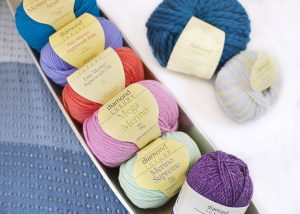above the age of 15 is diagnosed with arthritis. This disorder should not decrease the quality of your life. As for many knitting does not just come as a hobby. Instead for those who suffer from arthritis, knitting can become a form of meditation and stimulation for the mind to be released and distracted from the pain.
each other forming a firm structure. Hence providing extra support and evenly allocating weight from pressure points, this allows the body to further rest and heal for those who are diagnosed with arthritis. Wool bedding in particular can really help relive people’s arthritis condition. Studies have proven that people who sleep in wool bedding have felt a sense of improvement from their condition. Wool bedding is breathable, unlike down and cotton. Thus allowing a passage for hot air and moisture to pass through. Wool bedding can “absorb up to 30% of it’s own weight in moisture and still feel dry” (Do you suffer from, n.d.). This is beneficial to those diagnosed with arthritis as their pain enhances in damp environments.
disturbance and increase duration of beneficial REM sleep” (Benefits of Wool Bedding, n.d.). It’s also a fiber that can be used all year round. It is treasured in every season, not overheating in the winter and cools you down in the summer through it’s breathable material. Wool is a natural breathable fiber that provides improvement in life for many, especially those who suffer from arthritis. And no sheep are harmed in helping improve one’s life.
Diamond carries a wide range of merino wool. You are encourage to try Diamond’s merino wool. Diamond caters to all price points and tastes.
References:
Benefits of Wool Bedding: Common Uses & Health Benefits. (n.d.). Retrieved September 19, 2018, from https://shepherdsdream.com/benefits-of-wool-bedding/
Do you suffer from Arthritis? (n.d.). Retrieved September 19, 2018, from http://www.opurest.co.uk/information.php?info_id=17
Statistics Canada. (2017, September 27). Health Fact Sheets Chronic Conditions, 2016. Retrieved from https://www150.statcan.gc.ca/n1/pub/82-625-x/2017001/article/54858-eng.htm
